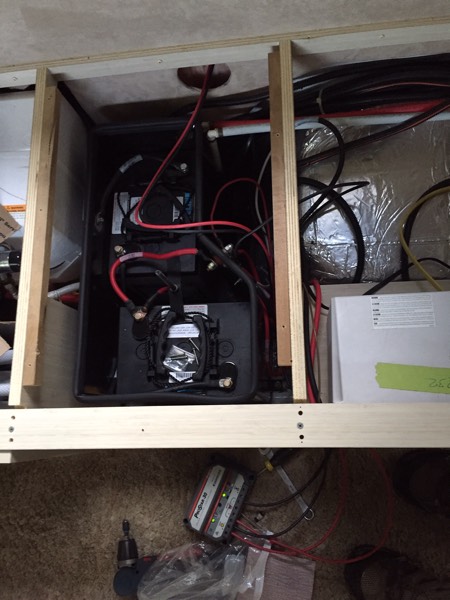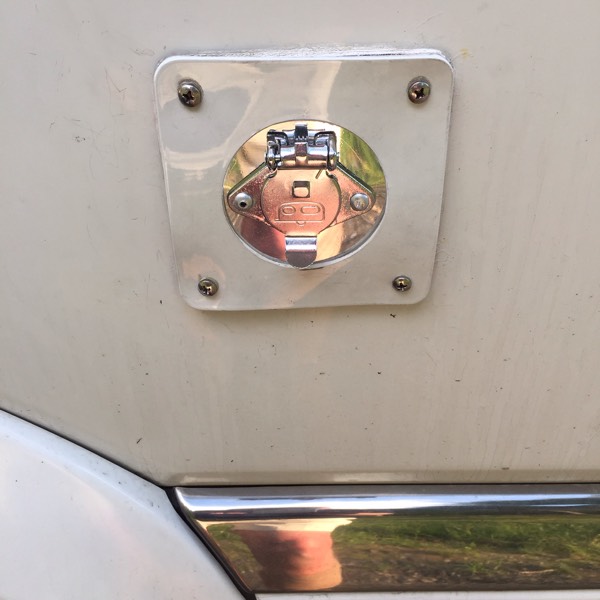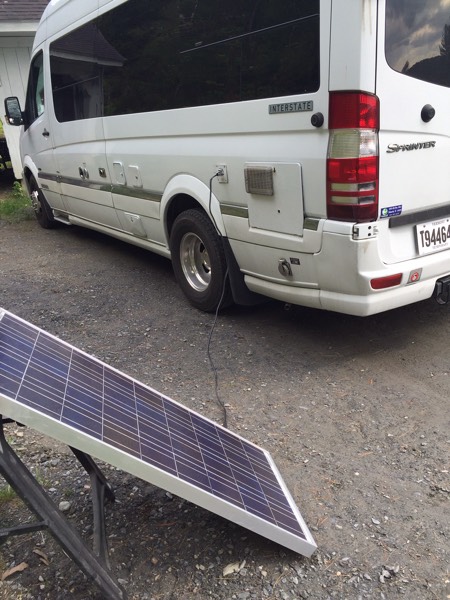As I get ready for a long trip, I am trying to address one of the issues that Interstates like mine have – which is weak electrical systems for camping in spots without hookup aka as boondocking. It is a problem I knew about and frankly, don’t anticipate long stints in non-electric situations. However, many state parks and federal sites are definitely non-utility.
The problem comes primarily from the refrigerator, which is electric only. Most trailers have a dual-option system where you can run on just propane but the wizards at Airstream decided, probably for venting issues, to opt for an electric-only. I can hear the design team: “They have an onboard generator, no problem.”
I had a small solar panel that we logged with the Safari trailer and decided to use that if I could. There’s really no room on the roof for panels without a lot of time and expense so I studied things a bit and to use a pun, a light bulb went off. I had two new deep cycle batteries – about 150 amp-hours total – which was less capacity than I wanted. They also had a vent tube going out to the side of the van. Voila! I could used AGM batteries, which require no venting, and run the line from the solar panel in through the vent. Of course, it sounded easier than it was.
I bought two 6 volt Lifeline golf cart batteries which fit into the limited space, connected them to get 12 volts and 220 amp-hours. Here’s a shot of the rabbit’s warren of wires – I’ve got a little finishing work to do.

My brother Barry suggest that I use a quick disconnect plug like he has used – and ordered me one. I bought the charge controller for the solar panel (to avoid overcharging the batteries) and some wire and fittings. Of course, the ground to the battery box snapped off when I tried to use it and I must of dropped some of the small screws for the disconnect several dozen times. The finished project looks pretty good.

I got everything ready, plugged in the panel, and we had liftoff. It’s not a big solar gain, probably 4 amps in full sunlight, but it will help nicely.

I have a good place to stow the panel inside the van so we’ll see how things go. The van has its own battery for the engine but while travelling, I should get some charging of the house batteries. I’ll test this out over the next few months and see if I need more capacity. For now, it was a relatively inexpensive do-it-yourself project (with technical assistance from my brother) that seems to be a good start to energy independence. Nothing like seeing that panel just sit there and quietly crank. Stay tuned.
Discover more from Vermont Birder
Subscribe to get the latest posts sent to your email.
